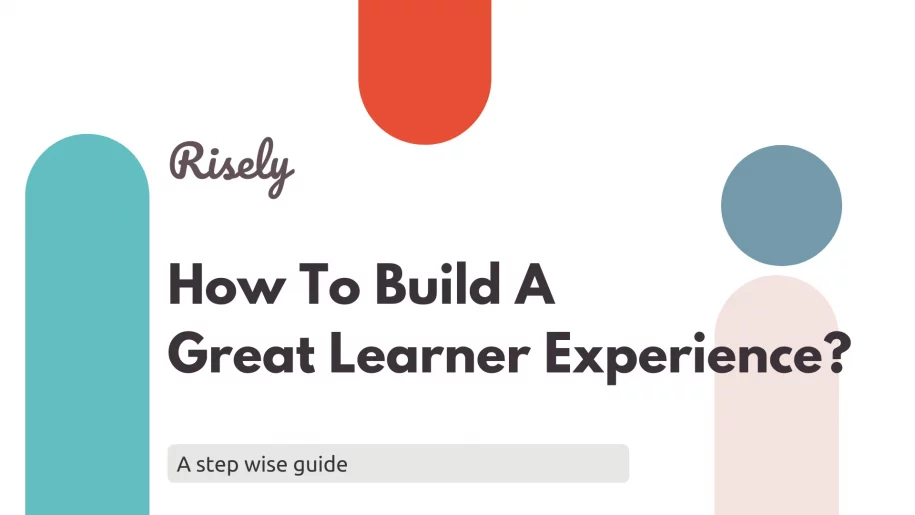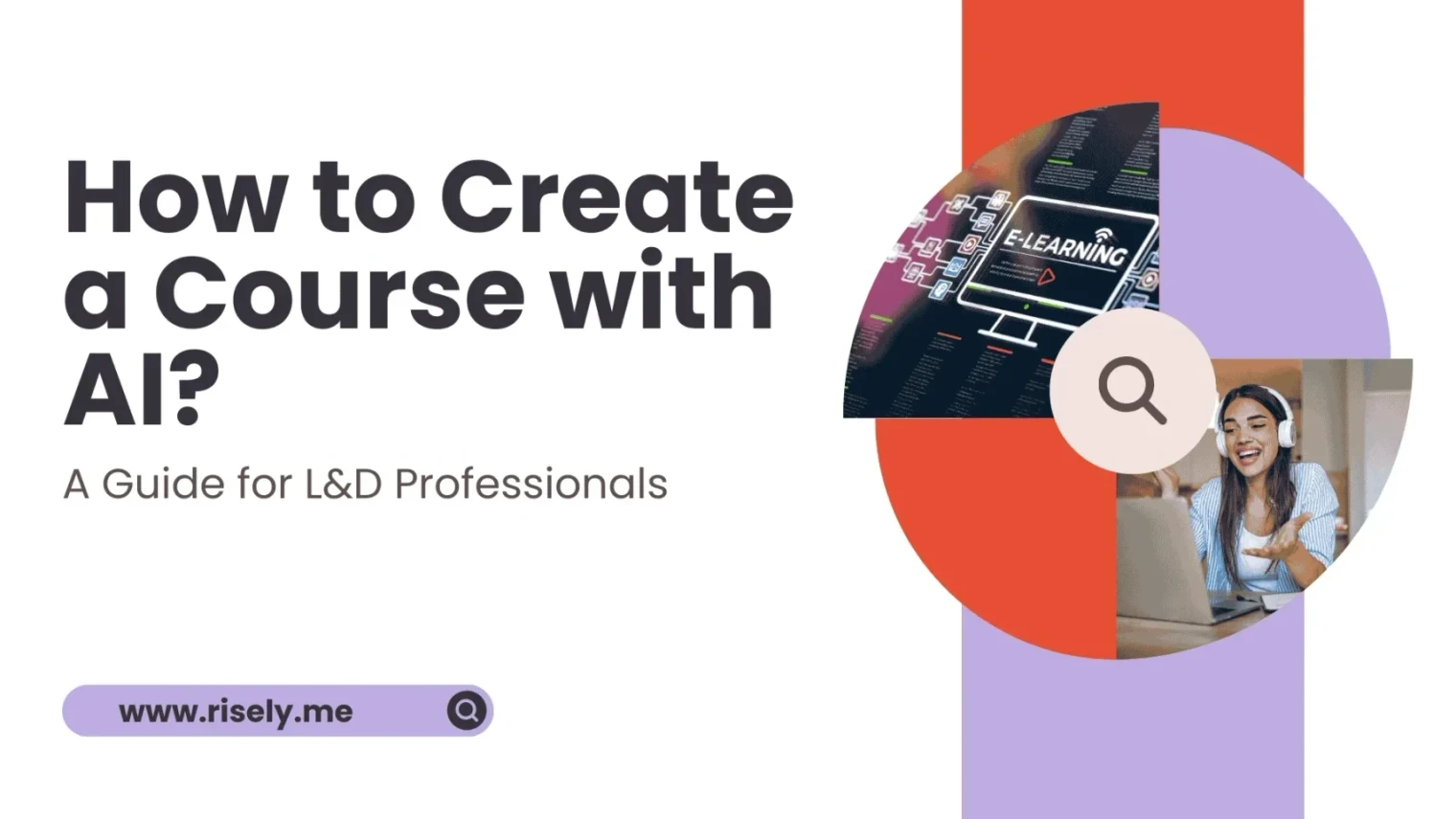Building Amazing Learner Experiences
In this blog post, we’ll discuss why creating fantastic learner experiences is crucial for learning and development success at work. We’ll also discuss what could go wrong if it is overlooked and offer some tips on how L&D professionals can develop effective strategies to ensure every student has a positive journey through education. Let’s explore ways we can give our employees top-notch educational experiences at work- Building Amazing Learner Experiences
- What is Learner Experience?
- Why do Your Learner’s Experiences Matter?
- How are Delightful Learning Experiences Made?
- 6 Factors of Good Learner Experiences
- How to create solid corporate learner experience?
- 3 Pitfalls to avoid while designing a learner experience at work
- Let’s Tie It All Up: How Does Learner Experience Align Within The Wider L&D Strategy?
- To Sum Up
What is Learner Experience?
Learner experience refers to the holistic journey that your team undergoes throughout an educational course or training as part of learning and development initiatives. It includes all the touch points and moments of interaction, from the small ones, like the look-and-feel of an online quiz, to the bigger, more visible factors, like a classroom lecture’s atmosphere. These learner experiences are critical in ensuring the transfer and application of knowledge. Learner experience (LX) design is all about making learning experiences that really change how learners see things. It’s when you plan and make learning activities with a clear goal in mind, focusing on the learner to keep them interested and help them learn better. LX design takes bits from instructional design, user experience (UX) design, and cognitive psychology to ensure these learning experiences are not only effective but also meaningful.Why do Your Learner’s Experiences Matter?
Does your organization invest in creating a meaningful learner experience? If not, you are missing out. The learning experience is not just a vanity metric; it carries a valuable impact that can often be hard to notice. First up, learner experience is vital to the success of learning and development efforts. Picture it yourself: where would you enjoy learning more, in a boring recorded video lecture or with a subject matter expert seeking your questions? A well-designed learner experience enhances knowledge retention and skill acquisition. Learners who are engaged and find the learning process intuitive and enjoyable are more likely to absorb and apply new information effectively. This undoubtedly means that your ROI for training is better when the LX is solid. Plus, there are secondary benefits to investing in training experiences at work. With a good learner experience, your teams are happier, and you can curb turnover because your employees see your company’s investment in their long-term growth. Over time, this adds up to a competitive advantage.To sum up, good learner experiences will:
- Impact the success of your L&D strategy
- Reduce turnover on your team
- Raise the loyalty of your people
- Show you positive impact on employee satisfaction and engagement
- Make internal mobility and career progressions easier
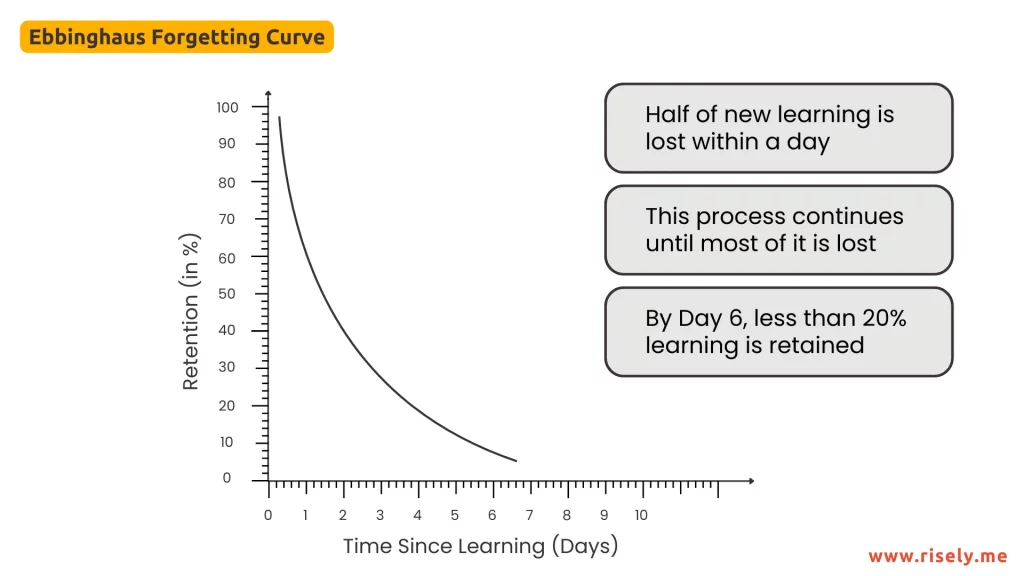
How are Delightful Learning Experiences Made?
Corporate learning = boring. That’s a common enough perception. And not one without reason. According to a Forbes article, nearly half (47%) of workers are dissatisfied with the training they receive at work. Corporate learning experiences are often dull, disconnected from real-life applications, and sometimes distracting from deadlines. The area is in for a rehaul. In conversation with Janis Cooper (VP, HR at Best Friends of Animal Society), we uncover how they make corporate training effective by focusing on experiences. The secret ingredient? Horses. Equine-facilitated learning is ushering in a new realm of leadership training for many companies.6 Factors of Good Learner Experiences
Multiple ingredients shape a solid learner experience: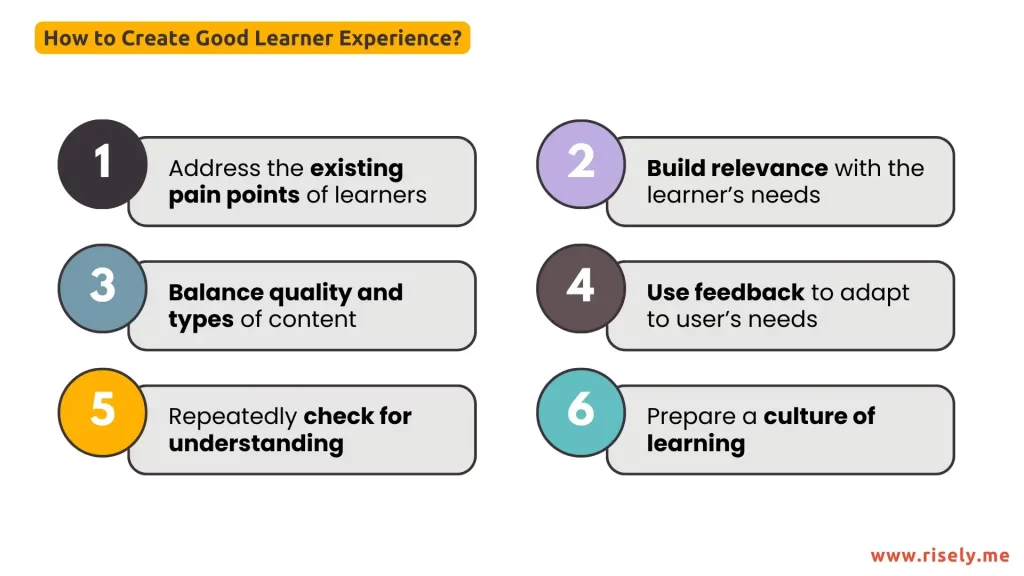
Addressing existing pain points
Do you want to create a good learning experience? Why don’t you start by understanding what is making it bad? Addressing the existing pain points in a learning journey is key to creating an experience that the team loves. For example, simplifying complex navigation in e-learning platforms or providing clearer instructions for assignments. Addressing pain points shows learners that their needs are understood and valued. This feeling of being heard already adds to positive workplace experiences.Building relevance
If you have ever been part of bad training, you know this question eventually pops up: Why am I here? A good learner experience answers it effectively. Within the learning path, build relevance for the user. Using real-world, relatable examples helps learners connect new information to their existing knowledge and work context. It could involve industry-specific case studies or scenarios that mirror common workplace situations, making the learning more applicable and memorable for your employees. Explore custom learning journeys on Risely.Don’t jam as much content as possible
Unsurprisingly, no one likes being bombarded with content. That’s plain old cognitive overload. A good learner experience considers this and creates balance. It focuses on high quality and the right quantity of inputs so that the learners can retain and apply ideas effectively.Adapts to user needs
It’s a no-brainer that learning styles, needs, and moods differ. What suits you may not suit another. However, being stuck in rigid learning experiences designed without considering unique needs is frustrating. Adaptability saves from this by tailoring content, pace, and difficulty to individual learners. It could involve allowing learners to choose their learning path or using AI to adjust content based on performance. Adaptivity ensures that learning is neither too easy nor too challenging.Checking for understanding
Pushing content constantly without seeing if it is getting understood or useful for the end-user is unhelpful. After all, how do you measure impact here? Effective learner experiences have elements that reinforce whether the user has understood or not. Regular knowledge checks, quizzes, or interactive elements help here. Based on this, you can ensure that learning gaps get detected and filled rather than overlooked.Your organization’s culture
Learning does not happen in isolation. Even the best programs could be a waste of time if senior leadership declares them so. This has been felt in the failure of leadership development programs over the years. Your team’s culture is critical in motivating people, shaping their attitude toward learning, making opportunities accessible, and even providing the support a learner receives in addition to the content they consume. Now that we know what shapes a good learner experience, let’s dive a bit better into the making of learning experiences.Free Learning and Development Strategy Template
A complete framework by Risely to evaluate and re-energize your organization’s growth.
How to create solid corporate learner experience?
To make learning really work, it’s all about planning carefully and designing with thought. Here are a few key steps that you should take to ensure it all goes well. First, let’s design the experience for our learners. For simplicity, we have broken it down into four steps.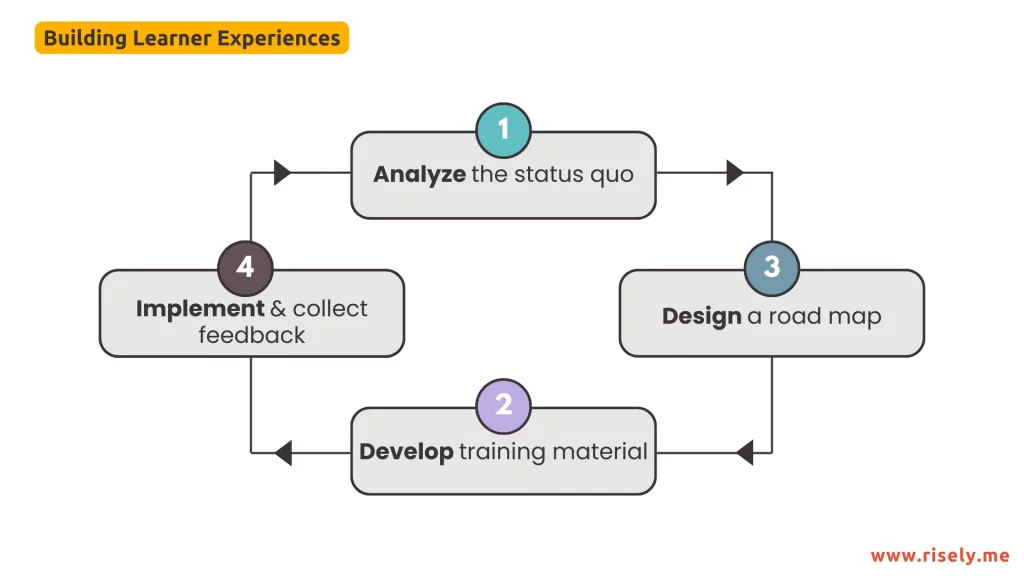
Analysis
Everything starts by understanding where you are and where you are headed. So, think of the current learner experience. What does it look like? Try to evaluate against the factors we saw listed above. Further, take a look at your learning and development objectives. Learner experiences differ based on what goals you are moving toward. You will also need to understand your target audience. For example, what’s the best way of teaching a new skill to ten teams of developers? Create a uniform and structured course with standardized assessments. But what about the team leads who need to work with a new tech? Help them build a growth mindset that opens them up to continuous learning with the help of one-on-one leadership coaching.Design
In step two, identify the building blocks of a solid learning experience. Start with a broad outline (read more about learning and development strategies). Next, finalize the components. What are those? Think of training methods, training delivery modes, subject-specific modules, and so on. Remember that we spoke of checking to understand to ensure LX’s success? We will need assessments, too! At the end of this step, you have all these placed along a clear roadmap.Development
In the third step of building learning experiences comes developing the training materials and methods we spoke of earlier. This is where you can create the most impact by focusing on the small details like:- Use good UI practices to create helpful learning pathways.
- Mix in media and interactive elements to cut down monotony in learning material.
- Use an understanding of psychology to plan lessons better. You might need to equip the trainers with resources and training, too.
- Keep the schedules and priorities of learners in mind to ensure that you are not overburdening them.
- Build a digital and physical learning environment, including setting up the LMS and the culture that supports growth
- Update training materials and assessments to reflect the latest know-how and boost your team’s expertise.
Implementation and evaluation
Now comes the real deal. Put your plans into action and observe the rollout. It is the right time to ask yourself how much you score on the factors of a good LX we saw earlier. Grab the template here and conduct a before-and-after evaluation of your organization’s learning experience with your employees. But this is just one side of the equation! Learner experience has a broader impact that must be evaluated. Where can you find that?- Look for performance changes. Improvements in regular reviews with direct managers are a good way to track the impact. A few one-on-one discussions can further help you gain clarity on the early patterns you might notice.
- Search for behavioral changes, too, such as meeting more deadlines or handling conflicts better.
- Assess against the learning objectives. You can do this using in-house assessments or external resources like Risely’s leadership skill assessments.
Other Interesting Reads
3 Pitfalls to avoid while designing a learner experience at work
We all make mistakes. So let’s prevent some before they happen.#1 You threw strategy and objectives out the window
Not really, but figuratively, it happens plenty while learning programs are being designed. An essential feature of good learning experiences is that they tie the company together into one. How does that happen? Ensure that learning objectives are derived from strategic ones and that learners’ needs are assessed before they are handed a plan. Not meeting learners where they are is setting your L&D strategy up for failure, as you will not be able to conceive the ideal learning experience.#2 You did not modernize with time
It’s 2024, and learning is no longer located in tall halls alone. It’s often happening at the moment, in small bursts, and likely through a mobile device. For instance, video is losing momentum across the US as a learning delivery mode. It’s scalable, available on demand, and saves you from arranging schedules. That sounds like a great thing, right? It’s not. Video learning is found to be the least engaging. As the content is pre-recording, there’s no stimulation to perform, and little mechanism to engage with the whole material. So the question is, what’s in? AI, hyper-personalization, microlearning, are some of the defining words of learning today. The world of L&D is more focused on the ultimate user, i.e. the employee, than ever. Similarly, there are new trends in L&D that you need to watch out for. Incorporate microlearning, hyper-personalization, user-centered planning, and the power of AI in learning experiences to make them a class apart.#3 You ignored the context of the learner
How one perceives the same lesson depends a lot on the context. Thus, it’s a powerful consideration of how a particular experience turns out. You could have designed it with the best intentions, but it can still be a misfit. Sounds confusing? It’s not. Employees need learning that helps them in some way – either empower them, improve their performance, or add to their long-term goals. If it does neither, no fancy illustrations will lead to a great experience. So first, keep their goals in mind. You also need to consider that they often don’t have three hours to put into learning after work and don’t like working with a mentor who probably gossips about them later. Plus, does your sales manager, with a chaotic team of five, need conflict resolution training? Would delegation skills be a better area to work on? All of this needs to be thought out before being planned out. Thus, the second point is to keep their needs in mind. It creates psychological safety and support, that are needed to learn successfully. You might not get all of this right in one go. That’s why this process of developing a learning experience for your team is often iterative, with feedback loops allowing for continuous improvement. Many instructional designers use specific models like ADDIE (Analysis, Design, Development, Implementation, Evaluation) or SAM (Successive Approximation Model) to guide their process.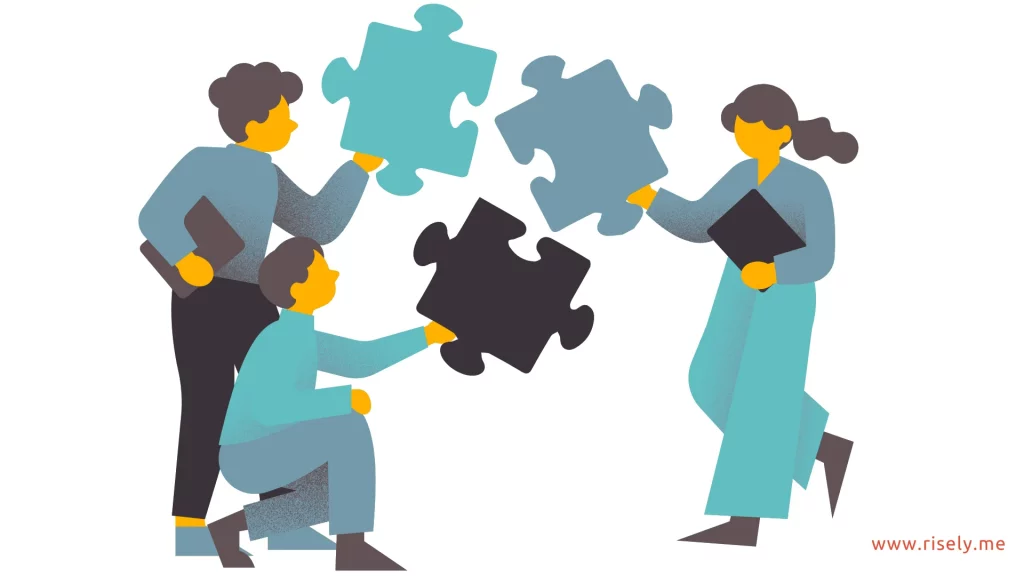
Let’s Tie It All Up: How Does Learner Experience Align Within The Wider L&D Strategy?
Learner experience is just one part of the wider L&D strategy. There are more elements in the play. Primarily, learners’ experience is one of the two critical enablers along with the organization’s culture and learner personas developed by the L&D teams.Learner Personas and Learner Experience
These two work together pretty directly. Learner personas are important in curating learner experiences. They help create user-centric and informed designs that are more helpful and impactful. As we see in the learner experience platforms, many of them focus on personalized learning journeys, which are designed with personas in mind. In your role, you can use learner personas to make learner experiences more tailored and interactive for particular users. There are many ways to do it:- curating relevant content for the user
- using appropriate modes of training delivery
- designing the suitable UI and interactions throughout the journey
- addressing specific concerns using precise communication and goal alignment
- exchanging feedback in the right medium
Now, what about the learning environment?
How does that tie in with learning experiences? Let’s understand this with a simple example:Environment 1
The team manager wants you to learn. They have pointed you toward some free online resources in your niche. And that’s pretty much it. However, your schedule does not allow for much free time. Plus, another colleague is working in the area you are learning. When it comes up in the performance review, you are marked low for not learning enough.Environment 2
Your team manager shared some resources that their friend from your professional area vouched for. A week later, they ask you about it. How did it go? Did you get time to surf through the material? The team manager also makes you shadow a colleague working on a project in that area. By the time reviews roll in, you are all set. You have learned and applied it hands-on; your manager knows all this.To Sum Up
In wrapping things up, remember that it’s super important to put the learner’s experience first when creating workplace educational content. By ensuring learning is engaging and sticks with learners, we boost what they get out of training. If we don’t pay attention to how learners feel, they might lose interest or not want to join in as much, which hurts the efficiency and success of L&D initiatives. When we fully commit to principles focused on giving learners an awesome ride through education—thinking deeply about experience design, focusing on learner experience design, and ensuring everything works effectively—we make learning something truly special.Free Learning and Development Strategy Template
A complete framework by Risely to evaluate and re-energize your organization’s growth.
How to Create a Course with AI: A Guide for L&D Professionals
How to Create a Course with AI: A Guide for L&D Professionals According to a McKinsey survey(1), only 11% of…
How to build a Learning and Development Action Plan ft Katie Greenwood
How to build a Learning and Development Action Plan ft Katie Greenwood Does your company’s Learning and Development (L&D) strategy…
Generative AI for Learning and Development: Getting Started
Generative AI for Learning and Development: Getting Started In 2024, organizations spent $401 billion globally on corporate training(1), yet 70%…
Future proofing a learning strategy for organizations with Inna Horvath
Future Proofing a Learning Strategy for Organizations with Inna Horvath With the advent of AI, everyone’s anticipating changes. L&D leaders…
What is Immersive Learning? A New Era in Education
In this blog, you’ll learn what is immersive learning and how it is changing training, increasing engagement, and influencing the…

